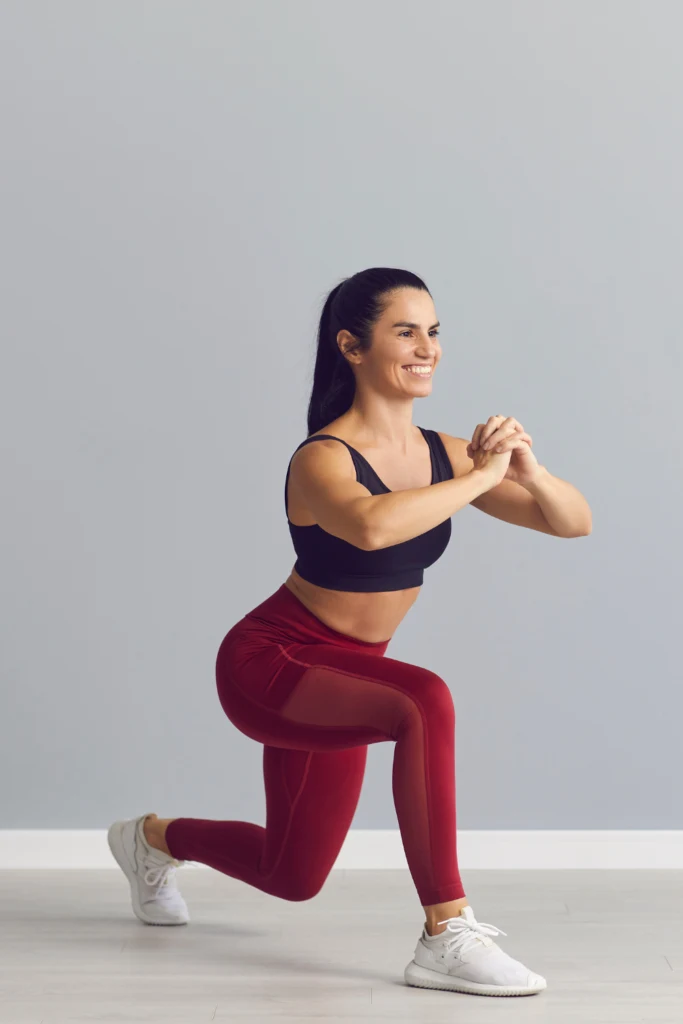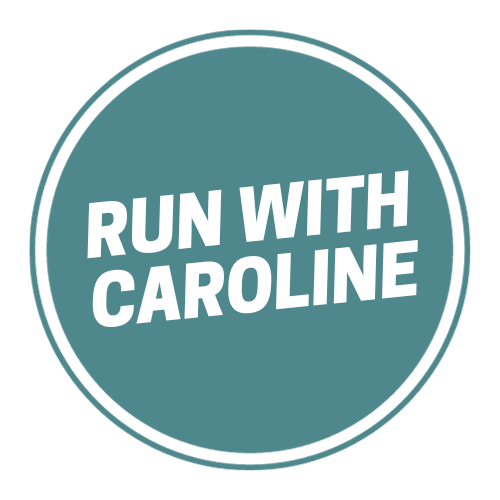The warm up before a run is arguably one of the most important things you should be doing as a runner.
Whether you’re planning to run 100 metres, a 5k or a half marathon, the warm up is an essential way to prepare yourself physically and mentally for the run or workout.
But what warm up exercises should you do as a part of a warm up?
What should be the focus of the warm up?
What type of stretches should you do as part of a warm up?
I’ll answer all these questions in this guide!
And the good news is there are warm up exercises that you can do to level up your body and mind for your run.
In this guide explore:
- What is a warm up?
- What are the benefits of a warm up?
- What should be included in a warm up?
- How long should you warm up before a run?
- 8 warm up exercises to do before your next run
Ready?
Let’s get started!

What is a warm up?
You can think of a warm up as a ‘dress rehearsal’ for your run.
It mimics the activity that you’re about to do so your body is prepped as much as possible.
Think about it: you wouldn’t go straight into a singing competition without some sort of vocal training – the same applies to running.
You need to warm up your muscles in order to achieve peak performance during your run and help prevent injury.
Related: Dynamic stretches for runners: 9 exercises to do before a run
What are the benefits of a warm up?
Here are the benefits of a warm up:
- Improves performance
- Raises your heart rate and body temperature
- Increases blood flow to your muscles
- Reduces muscle soreness
- Lessens the risk of injury
- Gets you physically and mentally prepared for the run
Improves performance
According to a 2010 study, a warm up was shown to improve performance by 79% in each of the criteria examined.
The study added that there is little evidence to suggest that warming up is detrimental to sports participants.
Raises heart rate and body temperature
A proper warm up elevates muscle temperature when performed 5 to 15 minutes ahead of the run
Warm ups can also reduce heavy loads on the heart, which can occur when high intensity exercise like sprinting is suddenly started.
Increases blood flow to the muscles
Research tells us that a warm up increases blood flow into the muscles.
This is important because blood transports oxygen to all the muscles required for exercise, meaning they can perform at their best.
Reduces muscle soreness
A warm up has been shown to prevent DOMS (delayed onset muscle soreness).
Some small studies suggest a decent warm up could reduce the amount of soreness experienced 48 hours after a workout.
Lessens the risk of injury
Performing warm ups can lower the risk of injuries in the muscles and tendons.
One 2012 study found that a warm up and stretching are essential to preventing muscle injuries by increasing the elasticity of muscles and smoothing muscular contractions.
Improper or excessive stretching and warming up can, however, predispose to muscle injury.
Gets you physically and mentally prepared for the run
One study showed that a warm up has a meaningful effect on exercise performance by affording psychological stability, preparation and confidence.
Related: Hip pain after running: 8 causes + how to fix it

What should be included in a warm up?
At its core, a proper warm up consists of four main parts:
- Jogging to get your heart racing
- Dynamic stretches to loosen your muscles
- Running drills (optional)
- Speed workouts (optional)
#1 Jogging
Jogging is an integral part of any warm up – whether you’re running a 5k or half marathon.
It is one the simplest things a runner can do to warm up before a run.
Start with a steady jog at a moderate pace for 5-10 minutes to get your heart racing.
Many runners find themselves jogging to the start of a race which can be classified as a warm up.
Don’t feel you have to double up on the jogging when you arrive at the race venue.
You may risk tiring yourself out before you’ve even started the race.
#2 Dynamic stretches
Dynamic stretching before running, sometimes called movement stretching, moves your limbs to lengthen muscles to the end of their range of motion.
This type of stretching is slightly different from static stretching.
It isn’t about holding a stretch but rather taking your body through ranges of motion that will better prepare you for your run.
A good rule to follow is dynamic stretching for warm up and static stretching for cool down.
Despite its name, dynamic stretching is all done in a controlled way so not to over-stretch your muscles.
#3 Running drills
It’s important to elevate your heart rate and get the blood flowing to your muscles before a run.
Once you’ve gone for a jog and completed some dynamic stretches, you can try some running drills to increase your heart rate even more.
Running drills can be mixed with the jogging part of the warm up.
Some of my favourite drills include:
- Butt kicks
- Skipping
- High knees
- Side to sides
#4 Speed workouts
Speed workouts are great for getting you ready for a run.
They are types of workout that help you to improve your speed, strength and endurance.
Interval training, tempo running and Fartlek training are all types of speed workout.
Strides are also a form of speed workout and these are great to include as part of a warm up.
Here’s how to do strides:
- Whilst jogging, gradually increase your speed until you reach a sprint at 90% effort.
- A distance of about 60 metres should be sufficient – you don’t want to maintain a sprint for much longer before the race or will you risk tiring yourself out.
Related: How to warm up properly before a 5k race

How long should you warm up before a run?
The length of your warm up will depend on the length and intensity of your run.
The general rule around warm ups is the more intense the run will be (like a 5k at a moderate or fast pace), the longer the warm up needs to be.
Simply put, a warm up before running a 5k will be different to a warm up before running a half marathon.
This is partly due to the types of muscle fibres that you’ll be using during the run and the energy systems that your body uses in order to get you through the run.
The following warm up routines can be used before a 5k run, 10k run, half marathon or marathon:
5k run (20-25 minutes)
- Light jog – 10 minutes
- Dynamic stretches – 10 minutes
- Strides – 5 minutes
10k run (20-25 minutes)
- Light jog – 10 minutes
- Dynamic stretches – 10 minutes
- Strides – 5 minutes
Half marathon (10-15 minutes)
- Light jog – 5 minutes
- Dynamic stretches – 10 minutes
Marathon (10-15 minutes)
- Light jog – 5 minutes
- Dynamic stretches – 10 minutes
Related: What are strides? Benefits + how to run strides

8 warm up exercises to do before a run
Here are some example dynamic warm up exercises to do before your next run.
Do around 8-10 repetitions of the following movements to get your body warmed up.
#1 Forward lunges
- Stand up straight and take a long step forward.
- Lower your front thigh until it is parallel with the floor.
- Your front knee should be directly above your right foot and your back knee should almost touch the ground.
- Push through the front foot back to the starting position and switch sides.
#2 Side lunges
- Stand up straight and put your hands on your hips. Step to the side with your right foot, push back with your hips and bend your right knee.
- Lower down until your right thigh is parallel with the floor. Your feet should be facing forward.
- Push through the right heel back to the starting position and switch sides.
#3 Star touches
- Stand with your feet wider than shoulder-width apart.
- While keeping your legs as straight as possible, reach across your body with your right hand and touch the toes of your left foot.
- Straighten back up to the starting position and repeat on the right side.
#4 Standing knee-to-chest stretch
- Stand with your feet hip-width apart.
- Lift your right knee, interlace your fingers under your knee and pull your knee towards your chest. Keep your core engaged and do not lean back.
- Lower your right leg to the starting position and repeat on the left side.
#5 Leg swings
- Support yourself on a wall or a post with one hand, and face straight ahead.
- Swing one leg forward and back like a pendulum, keeping your posture tall and your core engaged.
- Try not to swing your leg aggressively at first; instead, lightly start to swing it and gradually increase your range of motion.
- As you get blood flow to the muscles, you will feel yourself loosen up. Relax your hip joint as much as possible. Do 20 swings for each leg.
#6 Mountain climbers
- Mountain climbers help loosen your glutes and hip flexors whilst slightly raising your heart rate. Get into a plank position on your hands.
- Keeping your hands on the ground, bring your left leg forward into a lunge position. Next, simultaneously jump your right leg forward and left leg back.
- Repeat this alternating pattern for 10 reps.
#7 A-skips
- A-skips are all about driving your knee forward like you would do in a skipping motion.
- Stand with your feet hip-width apart. Pull one knee up toward your chest, driving off your opposite toe to hop up, then quickly place your foot back down.
- Then, bring your other knee up toward your chest, pushing off your opposite toe for a hop. Alternate for 10 reps.
#8 Jumping jacks
Jumping jacks are one of my favourite dynamic stretches because they improve circulation, activate your core and legs, and warm up your feet.
- Stand with your feet together.
- Jump your feet out wider than your hips, as you bring arms overhead.
- Jump your feet back together, bringing your arms down by your sides.
- Repeat at a quicker tempo.
Related: 9 quick and easy dynamic stretches to do before a run
- 5 things I wish I’d known before returning to running - March 3, 2024
- Running 20 minutes a day: Benefits + how to start - January 27, 2024
- How to run your first 2 hour half marathon - January 16, 2024
